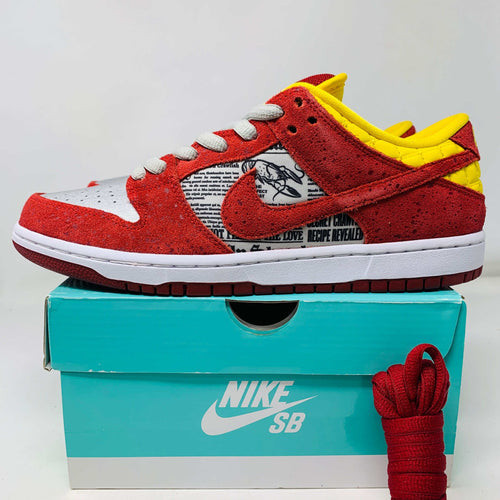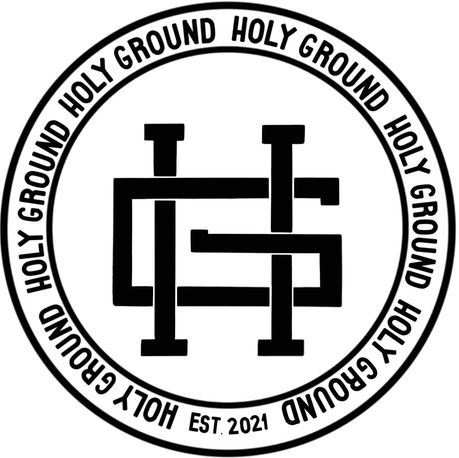
How to Tell if Sneakers Are Authentic: A Comprehensive Guide for Jordan, Yeezy, and Nike Fans
Share
Sneaker culture has grown into a global phenomenon, and with it, counterfeit sneakers have flooded the market. For collectors and enthusiasts, ensuring authenticity is crucial, especially when dealing with high-demand brands like Jordan, Yeezy, and Nike. This guide will help you spot fakes and ensure your sneakers are the real deal.
Check out our full video How to Legit Check Sneakers in Full Detail here.
Let's dive in...
1. Examine the Packaging
Authentic sneakers come in high-quality packaging. For example, Jordans are housed in sturdy boxes with crisp logos and consistent printing. Check for spelling errors, poor alignment, or low-quality materials. Nike and Yeezy boxes follow similar standards. Yeezy boxes often have minimalistic designs with bold, clear lettering. If the box feels flimsy or shows signs of poor craftsmanship, it’s likely a fake.
2. Check the Serial Numbers and Labels
One of the easiest ways to verify authenticity is by inspecting the serial numbers and labels. Each genuine sneaker has a unique serial number printed on the label inside the shoe, typically on the tongue or near the heel. Compare this number with the one on the box. For brands like Nike and Jordan, you can also cross-check the serial number online. If they don’t match or can’t be verified, the sneakers are likely counterfeit.
3. Inspect the Stitching and Construction
Premium sneakers are made with impeccable craftsmanship. Check the stitching on your shoes—it should be uniform, tight, and clean. For instance, authentic Jordans have consistent stitching patterns, while fakes often display uneven or frayed threads. Yeezys are known for their Primeknit construction; authentic pairs will have a smooth, detailed weave, while counterfeits may look rough or sloppy.
4. Analyze the Materials
Top sneaker brands use high-quality materials that feel premium to the touch. Nike’s Flyknit, leather, and suede should feel sturdy and well-finished. Jordans use premium leather that smells natural, while fakes often have a chemical odor. Yeezy Boost technology should provide a springy, responsive feel—counterfeit midsoles can feel rigid or overly soft. If the materials feel cheap or artificial, the shoes are likely not genuine.
5. Pay Attention to the Logos and Details
Logos and branding are common giveaways of fake sneakers. Authentic Jordan sneakers feature the iconic Jumpman logo with perfect proportions, while counterfeits often have distorted or off-centered designs. Nike’s signature swoosh should be sharp and consistent in size, position, and finish. For Yeezys, inspect the “YZY” or “SPLY-350” lettering on the side; genuine pairs have clean, precise fonts, whereas fakes can appear smudged or uneven.
6. Examine the Sole and Insoles
The sole and insole of a sneaker often reveal its authenticity. Authentic Nike Air or Yeezy Boost soles feature high-quality materials and specific patterns. For instance, real Yeezys have a distinctive Boost sole with evenly distributed texture. Jordans will often have Air cushioning that feels responsive. Remove the insole and look for brand logos and serial numbers—these should be printed clearly and with high precision.
7. Test the Weight and Feel
Authentic sneakers are designed with premium materials, making them heavier than counterfeit versions. Fake shoes often feel light because they use cheaper materials. Hold the sneakers in your hand or wear them; genuine pairs will feel well-balanced and sturdy.
8. Smell the Sneakers
It may sound unusual, but the smell of sneakers can be a strong indicator of authenticity. Real Jordans, Yeezys, and Nikes are made with high-grade materials that emit a natural or mild factory smell. Counterfeits, on the other hand, often have a strong chemical odor due to the use of inferior adhesives and materials.
9. Purchase from Trusted Retailers
The best way to avoid counterfeit sneakers is by purchasing from authorized retailers or directly from the brand’s website. Brands like Nike and Adidas (which produces Yeezys) often release official retail lists for new drops. If you’re buying from a reseller, use platforms like StockX or GOAT, which authenticate sneakers before sale. Avoid deals that seem too good to be true, as genuine pairs rarely sell for a fraction of their retail value.
10. Use Authentication Apps and Services
Several apps and services specialize in sneaker authentication. Apps like Legit Check and platforms like CheckCheck allow you to upload photos of your sneakers for expert verification. While these services may have a small fee, they can provide peace of mind, especially for high-value purchases.
----
Sneaker authenticity matters not only for personal satisfaction but also for maintaining the value of your collection. Whether you’re buying the latest Air Jordans, Yeezys, or classic Nikes, attention to detail is key. From packaging to logos, every element plays a role in distinguishing genuine sneakers from fakes. By following these tips and purchasing from trusted sources, you can confidently build a collection of authentic kicks.
Stay informed, and happy sneaker hunting!

